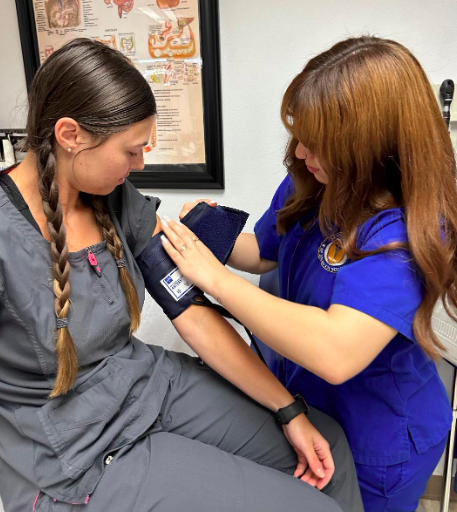
Vital signs are measurements of basic physiological functions that indicate the overall health and well-being of an individual; They provide important information about a person’s body functions and help healthcare professionals assess their current condition. The four main vital signs commonly measured are:
- Temperature: This indicates the body’s internal heat and can help identify fever or hypothermia, which can be signs of infection or other issues.
- Pulse: Also known as the heart rate, measures the number of times the heart beats per minute. Your pulse provides information about the heart’s function and circulation.
- Blood Pressure: It measures the force of blood against the walls of the arteries. Blood pressure readings help assess cardiovascular health and detect conditions like hypertension or hypotension.
- Respiratory Rate: This measures the number of breaths taken per minute. Respiratory rate provides insights into the efficiency of lung function and can help identify respiratory issues.
Medical Assistants should know how to take vital signs for several reasons:
- Assessment: Vital signs help medical professionals assess a patient’s overall health and detect any abnormalities or changes that may require further investigation or treatment.
- Monitoring: Regularly measuring vital signs allows healthcare providers to monitor a patient’s condition and track their progress during treatment or recovery.
- Early detection: Abnormal vital signs may be an early indication of underlying health problems or complications. By recognizing and reporting abnormal readings, Medical Assistants can help healthcare providers intervene and provide appropriate care promptly.
- Documentation: Accurate recording of vital signs is crucial for maintaining a patient’s medical records; This information serves as a baseline for future comparisons and helps in making informed decisions about patient care.
- Communication: Medical Assistants often act as a bridge between patients and healthcare providers. Understanding and effectively communicating vital sign measurements to the healthcare team ensures that everyone is well-informed and can make appropriate decisions regarding patient care.
Overall, knowing how to take vital signs is a fundamental skill for Medical Assistants as it contributes to the comprehensive assessment and care of patients. If you are looking for career relevant education in the medical field, contact the Allen School of Health Sciences today! www.allenschool.edu
